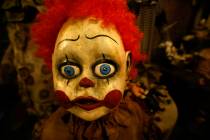Las Vegas Dr. Seuss exhibit reveals some of author’s secrets
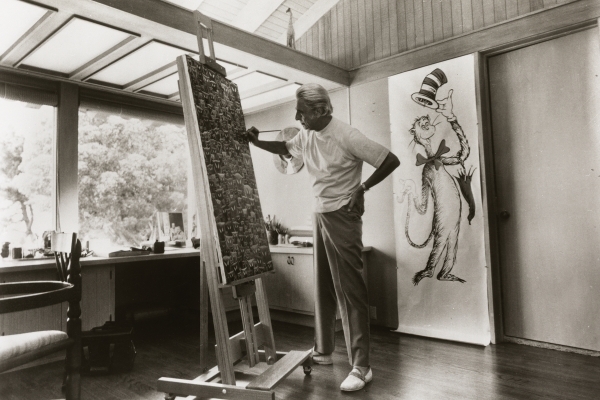
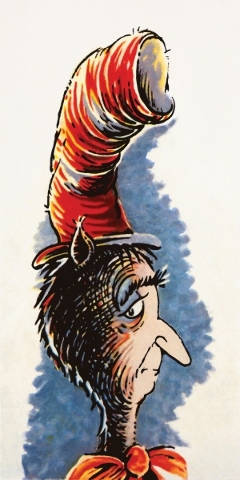
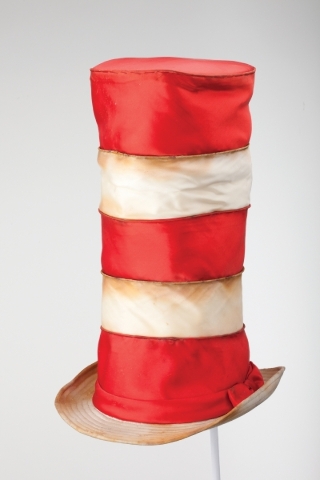


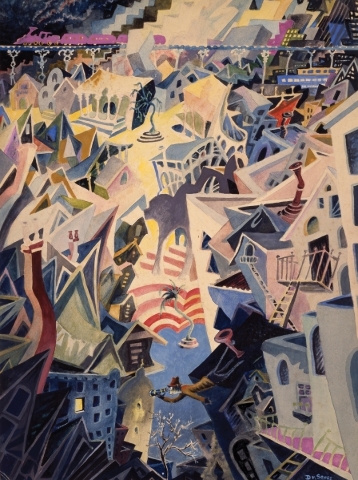
You know “The Cat in the Hat.” Everybody does.
But the cat behind “The Cat in the Hat” had his secrets — some of which are revealed in “Hats Off to Dr. Seuss!”
At the EC Gallery in the Forum Shops at Caesars through Sept. 13, the exhibit has been on tour for two years; Las Vegas is “one of the final stops,” according to Bill Dreyer, curator of the Art of Dr. Seuss, which organized the display.
“It’s a once-in-a-lifetime chance,” he says, to see “original artifacts from Dr. Seuss’ home in La Jolla,” the seaside San Diego community where his widow, Audrey, still resides.
Born Theodor Seuss Geisel, the beloved children’s author and illustrator — “Ted” to his friends — died in 1991, at 87.
“There were really two secrets that Dr. Seuss kept,” Dreyer says.
The first: an “art collection he created mostly at night, for himself,” the curator says. (We’ll get to that “Secret Art” in a bit.)
The second involves a pursuit Geisel began as a young man, in the Roaring ’20s, when he started to collect hats.
Geisel kept collecting hats even during World War II, when he served with an Army education and information department in Europe — bringing back a German field marshal’s helmet, a Japanese naval officer’s hat and headgear worn by a concentration camp prisoner.
Dreyer learned about the hat collection during one of his first visits to La Jolla, when Audrey Geisel asked, ” ‘Bill, would you like to see the hats?’ ” he recalls in a recent telephone interview from his suburban Chicago office.
She led Dreyer to a library with floor-to-ceiling shelves, then pulled a bookshelf away from the wall to reveal a hidden room with “a plethora of hats hanging on the walls,” Dreyer says. “It was almost like something out of James Bond.”
Twenty-six hats from the collection are on display in the “Hats Off” exhibit. And some of them will look familiar to Dr. Seuss readers.
There’s a feather-topped drum major’s hat from “The Butter Battle Book.” (It’s blue, so it must be a Yook hat; the Yooks’ enemies, the Zooks, wore orange.) A red Tyrolean cap with a white feather stands out as one of “The 500 Hats of Bartholomew Cubbins.” And, inevitably, there’s a leather version of “The Cat in the Hat’s” red-and-white-striped stovepipe.
That trademark top hat also appears in numerous paintings displayed in the “Hats Off” exhibit — including “The Cat Behind the Cat,” a self-portrait of Geisel sporting the towering headgear.
But that’s hardly the only “interesting correlation between the hats in the hat collection” and “the art he created,” Dreyer says.
In another example, Seuss’ painting “Raising Money for the Arts” — reportedly inspired by the philanthropic efforts of some La Jolla neighbors — depicts the gathered ladies wearing “these gorgeous, huge, dripping hats” with plenty of feathers, the curator describes.
The “Hats Off” collection features a similarly feathery hat, he says.
Although Seuss’ hat collection remained a secret to most, “if he thought a dinner party was lagging,” he’d break out the hats for his guests to wear, according to the curator, who quotes Audrey Geisel as saying, ” ‘That’s all you need to do — the evening takes care of itself.’ “
In addition to all those hats, “Hats Off” spotlights more than three dozen examples of Seuss’ “Secret Art,” which illustrate different aspects of his artistic talents, in Dreyer’s view.
Some paintings show the influence of such modern masters as Jackson Pollock and Frank Stella.
Another, “The Abduction of the Sabine Women,” depicting the founding of Rome, includes an elephant who looks a lot like Horton, Dreyer says — although, when Geisel painted it, he “doesn’t know he’s going to be a children’s book author” who’ll be featuring the character in “Horton Hears a Who.”
Along with the paintings, the exhibit includes sculptures Geisel created in the early 1930s, a “Collection of Unorthodox Taxidermy” featuring such outlandish creatures as the Goo-Goo-Eyed Tasmanian Wolghast and the Two-Horned Drouberhannis.
Any Dr. Seuss fan would recognize them as his creations, but their horned, feathered forms were inspired, in part, by Geisel’s father, a zoo superintendent in Springfield, Mass., who would bring home genuine horns, beaks and antlers to his son, Dreyer says.
Even when Geisel’s “Secret Art” doesn’t bear a direct resemblance to Dr. Seuss’ fanciful illustrations, there’s “a Seussian sensibility” that emerges from the works, the curator adds.
For example, “there are seascapes that are just beautiful, but they are in the Seussian style,” he says.
Those who visit the “Hats Off” exhibit expect to see the Dr. Seuss they already know and love, Dreyer says, “but you will walk out with a completely different idea of Dr. Seuss the artist.”
For more stories from Carol Cling go to bestoflasvegas.com. Contact her at ccling@reviewjournal.com and follow @CarolSCling on Twitter.
Preview
What: “Hats Off to Dr. Seuss!”
When: 10 a.m. to 11 p.m. Sundays-Thursdays, 10 a.m.-midnight Fridays and Saturdays, through Sept. 13
Where: Exclusive Collections Gallery, Forum Shops at Caesars, 3500 Las Vegas Blvd. South
Admission: Free (702-432-1157)














